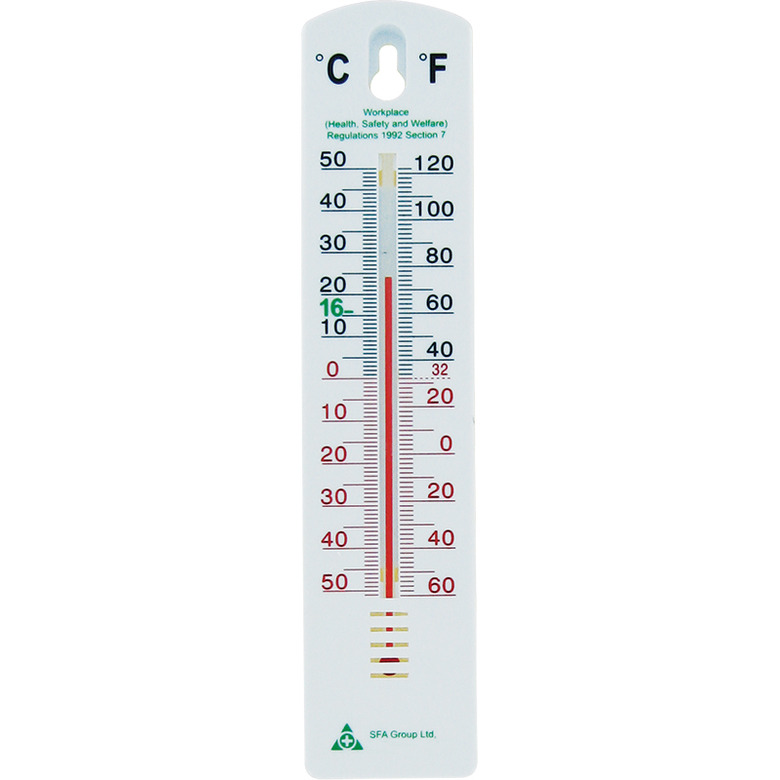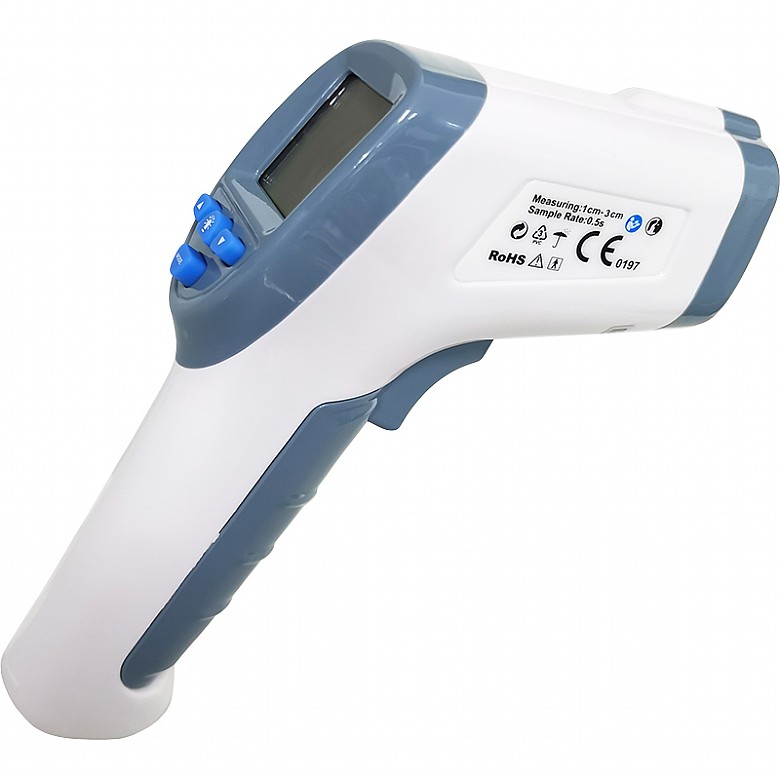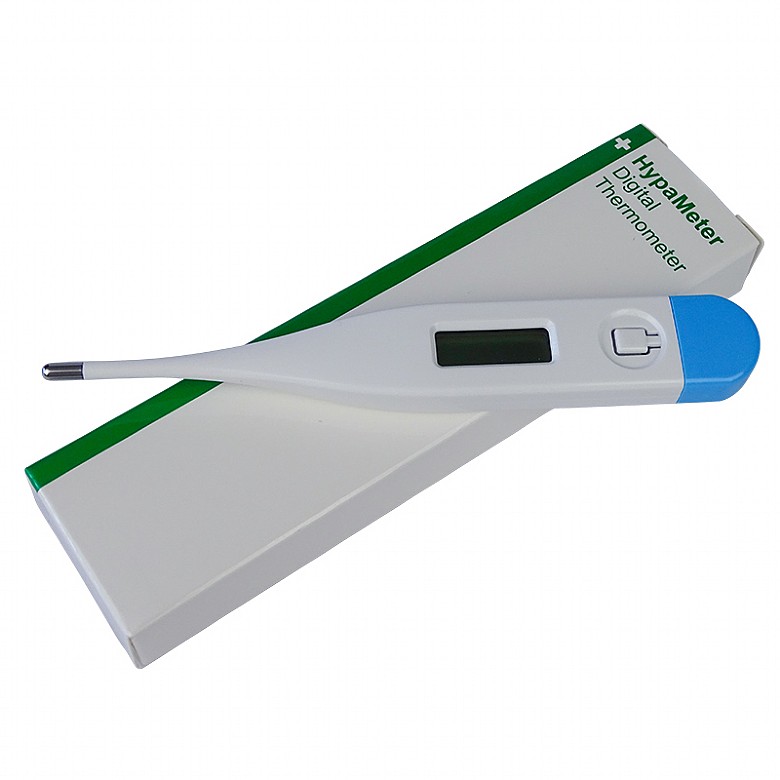
Thermometers are a useful first aid tool that allow you to accurately assess whether someone has a fever, which improves your ability to provide them with effective first aid. There are many kinds of thermometers to choose from, some which require contact and some which don’t.
Understanding how your thermometer works is paramount to providing effective first aid treatment at work or in your home. When someone’s feeling ill, you never want to rely on guessing – here are the differences between the types of thermometers and how to use them.
Contact thermometers vs. Remote thermometers

There are generally two types of thermometers:
- Touch or contact: Thermometers that need to be touching the body to measure temperature.
- Remote or no contact: Thermometers that can measure the body’s temperature without touching the skin.
A thermometer meant for another purpose, like a meat or laboratory thermometer, should never be used on a person as the readings won’t be accurate.
Contact thermometers
Contact thermometers are the most common kind, and work by using electronic heat sensors to record the body’s temperature. They can be used on the armpit, forehead, mouth or rectum, and show the temperature reading on a digital display.The benefits
- Most digital contact thermometers can report temperatures in less than a minute
- Provides highly accurate readings
The drawbacks
- Rectal temperature readings can be uncomfortable
- The accuracy of oral readings can be affected by food or drink
If you’re taking a temperature orally, ensure that the patient hasn’t eaten or drank anything for at least 15 minutes – this will ensure your reading is as accurate as possible.
Don’t use the same thermometer for both oral and rectal readings. If you need to do both, you’ll need two thermometers, preferably labeled.
How to use a contact thermometer
If you’re taking a reading orally:- Step 1: Wash your hands thoroughly and wear gloves if you can, then ensure your thermometer is clean and working.
- Step 2: Turn on the thermometer and fit the plastic sheath over the tip. Usually, the thermometer indicates that it’s working with either a light, a sound or both.
- Step 3: Insert the thermometer into the mouth, placing the tip underneath the tongue. Keep the mouth closed until you’re alerted with a beep.
- Step 4: Remove the thermometer and note the reading.
If you’re taking a reading rectally:
- Step 1: Wash your hands thoroughly and wear gloves if you can, then ensure your thermometer is clean and working.
- Step 2: Turn on the thermometer and apply lubricant to the tip, then wait for the signal that the thermometer is ready for use (usually a light or a sound).
- Step 3: Making sure you keep the thermometer straight, gently insert the tip of it into the rectum, going no deeper than 1 inch. Hold it in place to ensure it doesn’t slip out.
- Step 4: Wait until you’re alerted with a sound that the reading is complete.
- Step 5: Remove the thermometer and note the reading.
Remote thermometers
Remote thermometers use infrared sensors to measure the body’s temperature from a short distance by scanning the superficial temporal artery. They are frequently used in highly populated public spaces like airports and stadiums as their readings are quick and don’t require contact.The benefits
- Remote thermometers can provide readings in as quick as a few seconds
- They are easy to use and free of discomfort
The drawbacks
- Remote thermometers must be positioned in a specific way to give an accurate reading
- Readings are easily affected by factors like wind, direct sunlight or indoor ambient temperature
- Thick hats and other clothing can affect the accuracy of the reading
How to use a remote thermometer
- Step 1: Make sure you remove the protective cap from your remote thermometer before use. Turn your thermometer on and wait for the startup sequence to finish.
- Step 2: Position the thermometer between 1 and 3 centimetres away from the centre of the forehead. For the most accurate reading, ensure the forehead is clean and unobstructed by hair or clothing.
- Step 3: Hold the thermometer steady, then press the trigger to take the temperature reading.
- Step 4: The thermometer will alert you when the reading is complete – this should only take a few seconds.
Which thermometer should you use?
Digital contact thermometers are a popular choice for use at home due to their accuracy and reliability. Remote thermometers are becoming more popular, however, due to their speed and convenience – especially in crowded public settings.Results can vary depending on your environment and the type of thermometer you use, so keep that in mind whenever you take a reading.
While they were once the norm, mercury thermometers should no longer be used due to safety concerns – the sale of them has been banned in the UK since 2009.
Read our other blogs for more information on first aid or contact us for further advice and information on our products.
About the author:
Jo Stokes is a writer, marketer and trained first aider at First Aid Online.
Find out more about Jo.
By Jo Stokes




